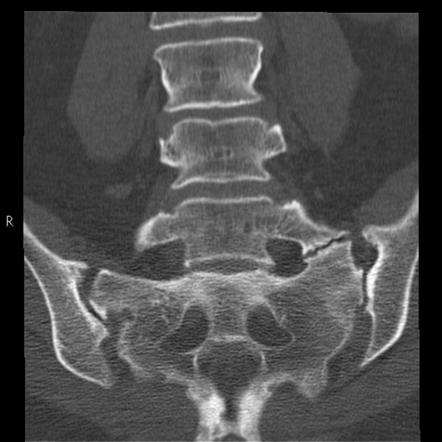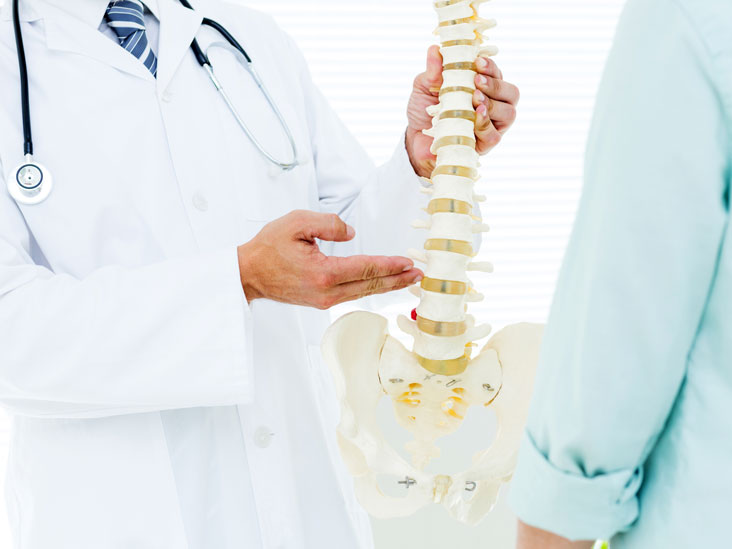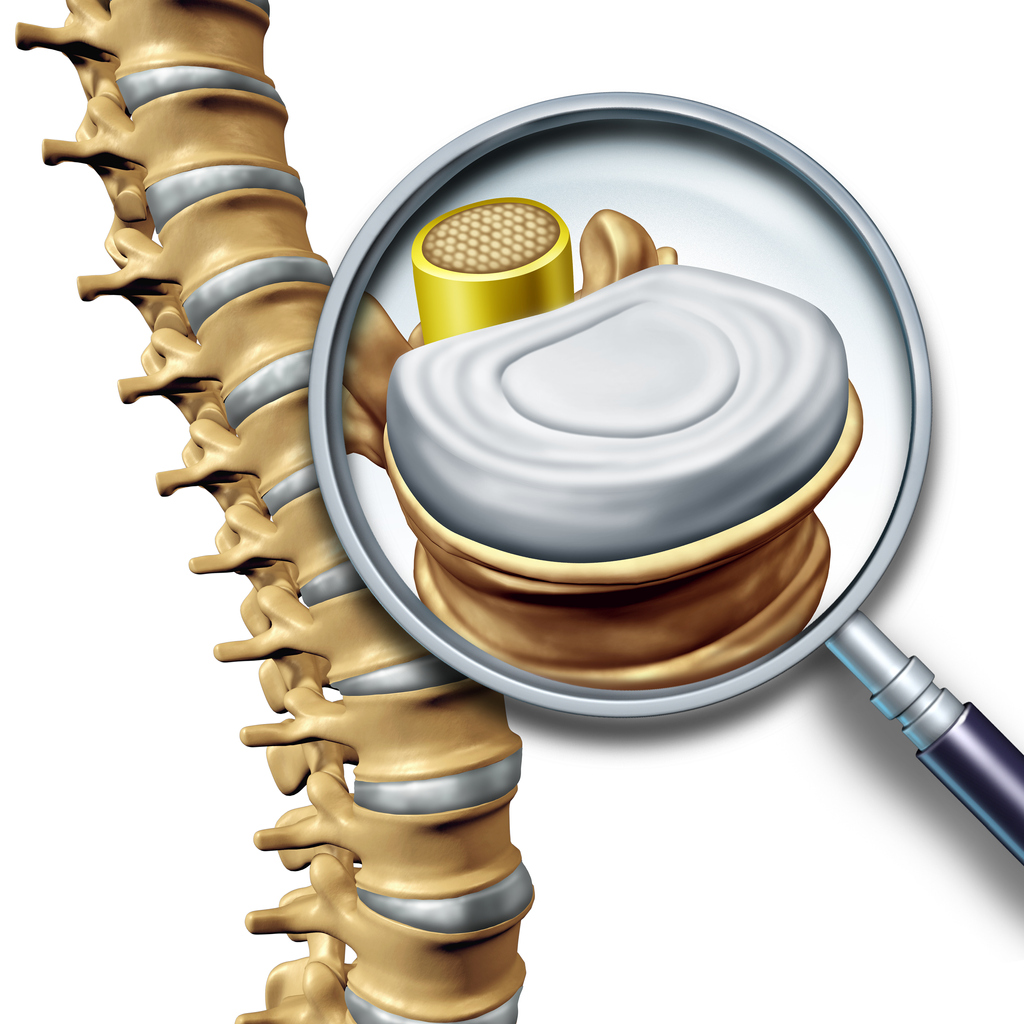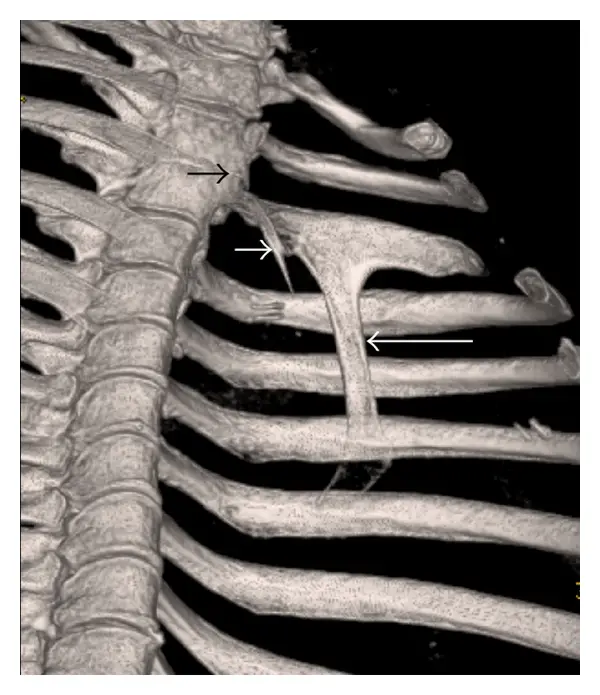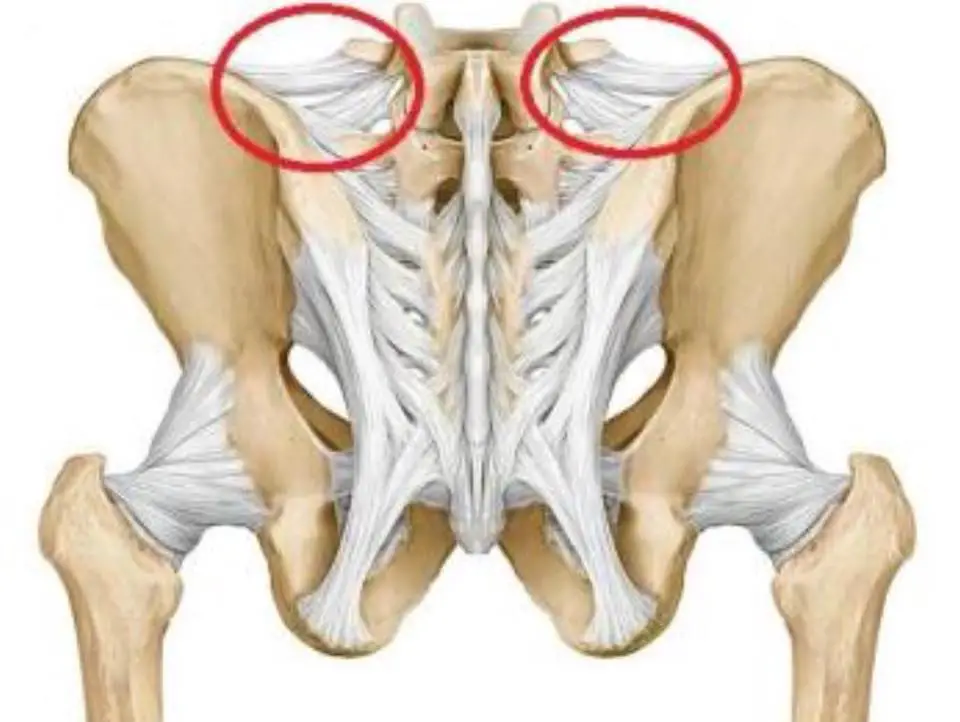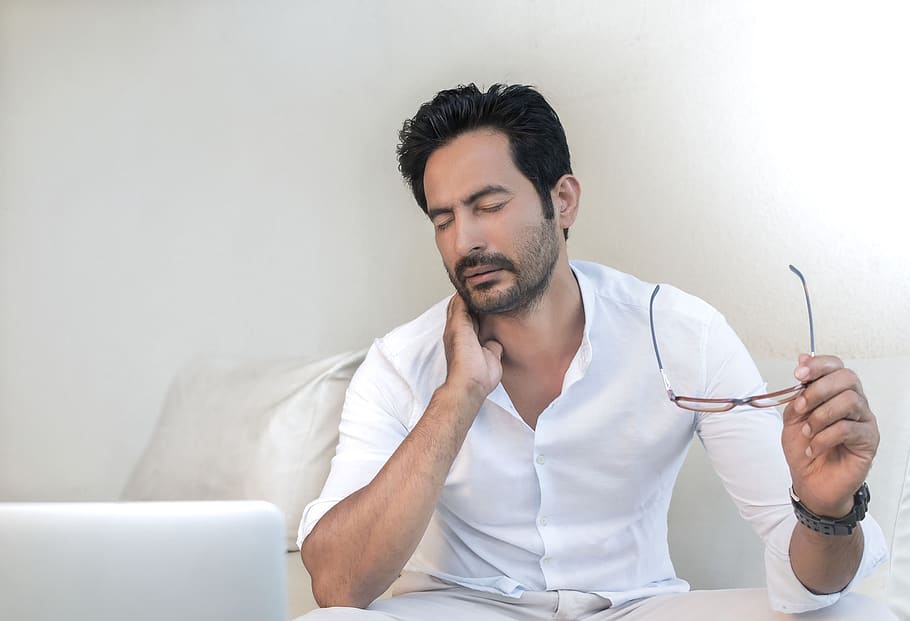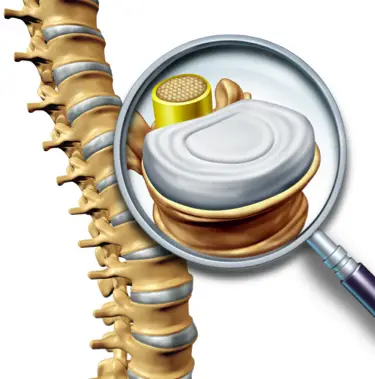Article reviewed and approved by Dr. Ibtissama Boukas, physician specializing in family medicine
Your lower back pain won't go away despite trying several treatment approaches. What if it was Maigne's syndrome that was responsible for your symptoms?
What is it, exactly? How to recognize Maigne syndrome, and what are the different causes? And above all, how to treat this condition often confused with other forms of low back pain?
This popular article explains everything you need to know about Maigne's syndrome, emphasizing concrete solutions to get better.
Definition and anatomy
Before talking about Maigne's syndrome, it is worth discussing the anatomy of the vertebrae dorsal and lumbar to better understand this condition.
The dorsal vertebrae (or dorsal spine) are 12 in number (numbered D1 to D12). The alignment of these vertebrae means that they allow a lot of rotation.
The lumbar vertebrae (or Lumbar spine), they are 5 in number. Unlike the dorsal column, these vertebrae are not very mobile in rotation. Rather, their alignment allows for more movement in flexion and extension.
The junction between the last vertebrate dorsal and the first lumbar vertebra is called thoraco-lumbar hingee (also called D12-L1). This site is under a lot of stress because it is a transition zone between the end of the dorsal vertebrae and the ribs with the lumbar vertebrae. This can lead to degeneration and irritation of the facet joints (also called zygapophyseal osteoarthritis).
In addition, there are several nerves that emerge from the thoracolumbar junction. Damage to these nerves will cause pain depending on their distribution.
For example, affected nerve roots innervate including the lower lumbar region, upper buttocks, sacrum, groin, labia majora or scrotum, trochanteric region (hip), and outer thigh .
In short, any dysfunction of the thoraco-lumbar junction leads in particular to pain that radiates to the lower back and its surroundings. It can be joint or disc damage (such as a back hernia), or nervous. This condition is referred to as Maigne's syndrome, or thoraco-lumbar hinge. This condition was named after French orthopedic physician Robert Maigne.
Symptoms of the disease
Patients with Maigne syndrome usually complain of pain in the lower back.
This pain may also radiate to the hip, buttock, oldest boy, or even the thigh. It is not uncommon for patients to also complain of stomach ache, or even pain in the area pelvic and pubic (testicular pain, lip pain, etc.).
In addition to pain symptoms, the patient may complain of fatigue or constipation. Other disorders such as digestive problems, diarrhea, or dysuria have also been linked to Maigne syndrome. These symptoms are explained in particular by the anatomical proximity of the sympathetic and parasympathetic systems which have a role to play in gastrointestinal and sexual function.
Diagnosis of Maigne syndrome
Diagnosis of Maigne syndrome usually takes a long time to be administered. This is because lower back pain is often confused with lower back pain.
Moreover, certain symptoms specific to Maigne syndrome can be confused with one of the following conditions:
- Infection
- Muscle elongation of the adductors
- Genital disorder
- Sacroiliac dysfunction
- Hip problem (coxofemoral osteoarthritis)
Often, it is when the symptoms persist despite several treatment approaches that the healthcare professional considers other diagnostic hypotheses.
Here are some predictive clinical features and tests that can lead to a diagnosis of Maigne syndrome:
- Pain in the lumbar region, sacroiliac region, groin, genitals, outer thigh and/or lower abdominal region.
- The pain is usually unilateral (on one side), although bilateral cases (on either side of the spine) are possible. This pain is chronic and constant, although it can vary in intensity.
- Hypersensitivity of the skin and subcutaneous tissues at the level of the thoraco-lumbar junction, the gluteal crest and the iliac (skin sensitivity, hypertonicity, etc.).
- Posterioranterior (PPA) pressure test pain and tenderness over the affected thoracolumbar segment. This pressure can also reproduce the referred pain.
- Possible malfunction of thesacroiliac joint on the same side of the lesion.
- Absence of signs of nerve root irritation at theneurological examination (Lasegue test, PKB, etc).
- The radiographic results of the Lumbar spine, sacroiliac and hip are generally unremarkable, although degenerative signs may be observed in some cases.
Treatment
To treat Maigne's syndrome, different approaches should be used than those typically considered for low back pain.
For example, working the muscles of the lumbar region, or stretching the gluteal muscles, generally does not provide results.
Here are some treatment options often used in the treatment of Maigne syndrome:
Medication
As with low back pain, anti-inflammatories, pain relievers and/or muscle relaxants are prescribed to calm the inflammation and pain.
On the other hand, patients suffering from Maigne's syndrome have generally already tried this approach, without success.
heat and ice
Heat and/or ice are often used to relieve low back pain symptoms.
On the other hand, they are often applied to the level of the lumbar region since the pain is felt there.
In the case of Maigne's syndrome, the origin of the symptoms comes from the dorso-lumbar hinge, and the symptoms felt at the lumbar level are explained by the concept of referred pain.
With this in mind, these modalities should be placed at the thoraco-lumbar level to obtain relief (and not in the lower back).
For the difference between heat and ice, see next article.
Myofascial release and massage
As the thoraco-lumbar region is often hypersensitive and hypertonic, muscle relaxation techniques can relieve symptoms.
For example, massage techniques, palpation-rolling, and myofascial release can be used by a therapist. Obviously, he will adapt his approach according to the patient (superficial vs deep techniques).
Joint mobilization and manipulation
In Maigne's syndrome, it is sometimes observed that the thoracolumbar region is hypomobile. This means that the D12 and L1 vertebrae do not move enough in the sagittal plane.
Although these findings are subjective, manual work by a therapist (such as an osteopath) to mobilize the vertebrae may be beneficial in reducing pain and other symptoms.
Spinal traction techniques are regularly used to reduce stress on the thoracolumbar junction. This will also reduce pressure on the nerves emerging from this site, which are often irritated in Maigne syndrome. In addition, spinal manipulations at the D12-L1 level may also be relevant in some cases.
Eventually, manual work from an osteopath could act on the sympathetic and parasympathetic systems to relieve symptoms. Although the mechanism of action of osteopathic manipulations is controversial from a scientific point of view, they generally offer good clinical results.
Postural correction
Without wanting to blame bad posture as the cause of Maigne syndrome, it should be known that prolonged static postures can cause back pain.
Thus, astand exercises to straighten your back may help relieve symptoms in some cases, and prevent future pain.
In certain specific cases, the use of a posture corrector may be helpful in preventing trunk sagging. On the other hand, these devices fix the body in a precise position, and can inhibit the action of the postural muscles in the long term.
To know the opinion of a physiotherapist on the posture correctors (and when to use them), see the following article.
Exercices
In general, passive manual techniques (that is, administered by a therapist) offer short-term results only. It is for this reason that an active approach is always recommended as a complement.
Exercises aimed at opening up the thoraco-lumbar space can be prescribed by a physiotherapist, for example. They often involve bending and sideways tilting movements aimed at reducing stress on the affected side.
When the pain is under control, trunk stabilization exercises should be done to prevent recurrences. This involves strengthening the back, lumbar, peri-scapular (around the shoulder blades) muscles, etc.
If the patient suffering from Maigne's syndrome wants to return to sport, it will be necessary to analyze the movements and requirements specific to the sport practiced. Then, a gradual return will be considered, with rehabilitation focused on optimizing sporting gestures.
Infiltration
A treatment option when symptoms do not subside is infiltration.
Moreover, infiltration at the level of the thoraco-lumbar hinge can also serve as a diagnostic tool to clarify Maigne's syndrome.
If we observe a significant pain relief after this type of infiltration, we can conclude that it is indeed a Maigne syndrome. We can then concentrate on this area, and even resort to subsequent infiltrations if necessary.
To learn all about back infiltration (and the different types), see the following article.
What about natural remedies?
Although they are not supported by solid scientific evidence, several natural products and home remedies are used to treat back pain, especially for their anti-inflammatory power. It is essential to consult a doctor beforehand, mainly to avoid drug interactions and side effects.
Here is a non-exhaustive list of plants and essential oils that are effective in controlling pain and inflammation. The products are available on the site Country. Use promo code LOMBAFIT15 if you wish to obtain one of the following products, or any remedy aimed at relieving your symptoms and improving your quality of life:
- Turmeric. Thanks to its antioxidant and anti-inflammatory powers very powerful, turmeric is one of the most used plants in a culinary and therapeutic context. The composition of turmeric is essentially made of essential oils, vitamins (B1, B2, B6, C, E, K) and trace elements. But it is to its composition rich in curcumin and curcuminoids that we owe them and calm skin of this spice.
- Ginger. In addition to the special flavor it brings to the kitchen and its aphrodisiac properties, ginger is a root well known for its anti-inflammatory powers. the gingerol gives it its anti-inflammatory action. It is an active component acting on the inflammatory pain related to chronic joint inflammatory diseases, including rheumatoid arthritis, lupus, rheumatic diseases, etc. It has been proven that this active element is also effective in acting on the inflammation linked to arthritis and sciatica. Ginger also has other benefits thanks to its high potassium content and its richness in trace elements (calcium, magnesium, phosphorus, sodium) and vitamins (provitamin and vitamin B9).
- Omega-3s. Omega-3s are polyunsaturated fatty acids that play a very important role in the functioning of our body. They are provided by food in three natural forms: docosahexaenoic acid (DHA), alpha linolenic acid (ALA) and eicosapentaenoic acid (EPA). Beyond their action on the brain and the cardiovascular system, omega-3s prove very effective against inflammation. Indeed, they have the ability to act on the inflammatory mechanisms in osteoarthritis by slowing down cartilage destruction, thus they reduce the intensity of osteoarthritis pain. Sciatica, being most often linked to an inflammation secondary to a herniated disc, it can also respond to omega-3 provided it is consumed regularly.
- Lemon eucalyptus. Eucalyptus is a plant most often used in the form of herbal tea or essential oil. She would have anti-inflammatory effects which give it the ability to act on the bone and joint pain in general and the pain of sciatica in particular.
- wintergreen. Wintergreen is a shrub from which a very interesting essential oil is extracted. It is one of the most used essential oils in aromatherapy. This oil extracted from the shrub bearing the same name, is used in massage to relieve sciatica and act like a analgesic. Indeed, it provides a heating effect thanks to its ability toactivate blood circulation locally.
Remember that these products do not replace medical treatment. Do not hesitate to consult for support adapted to your condition.
Conclusion
Maigne's syndrome is a condition often confused with low back pain. Although it reproduces pain in the lower back and its surroundings, the origin of the problem comes from the thoraco-lumbar junction.
The diagnosis of Maigne syndrome includes several criteria. A healthcare professional will know how to identify this condition, especially if the treatment approaches employed so far have not been successful.
If the pain comes from the thoraco-lumbar junction, specific work on this region (including massages, mobilizations, exercises, etc.) can make a big difference.
Good recovery !
Resources
Forum where people suffering from Maigne syndrome share their experience
Video about pain between the shoulder blades :




